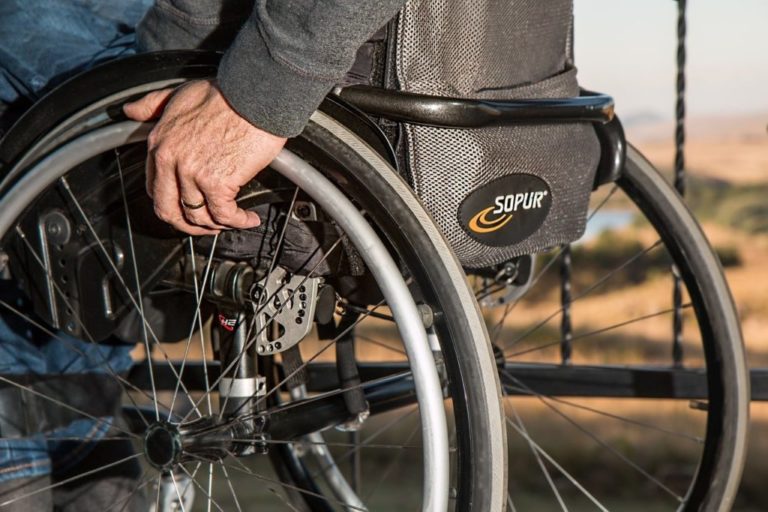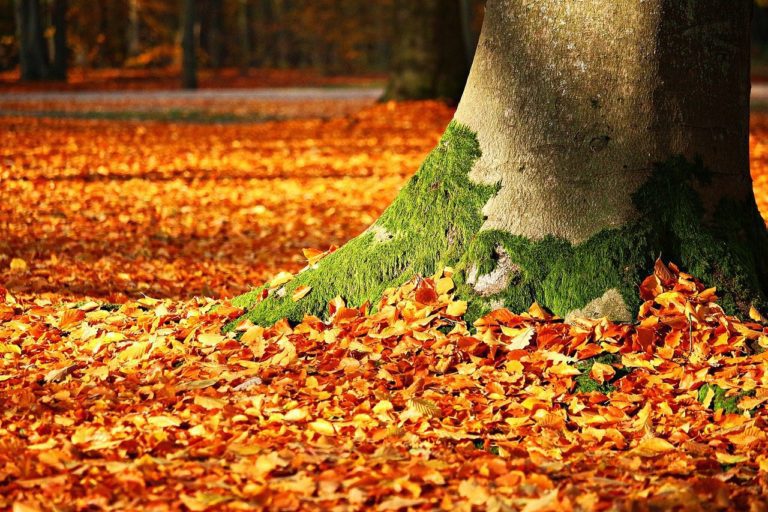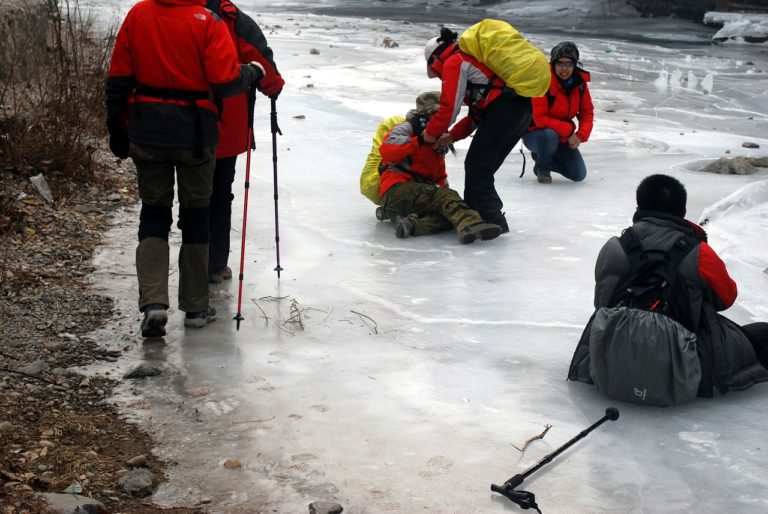Slip and fall accidents can be disorienting and cause serious injuries. If you have a slip and fall accident, here is what you should know.
What To Do After A Slip And Fall Accident?
There are several things you should do immediately following a slip and fall accident.
- Check yourself for serious injuries. If you are injured, seek medical treatment immediately.
- If you are at a store, report the fall to an employee as soon as possible. Get the person’s name and other information to whom you reported the accident. This may become important later in your case.
- Determine what caused your fall. Was there something spilled or leaking on the floor? Did you step on sometimes unstable? Was weather a factor? Once you determine the cause of your fall, document it by taking pictures if you can.
- Get the contact information of any witnesses who saw your fall.
- Contact an attorney sooner rather than later to determine if you have a legal claim.
How long do you have to go to the Doctor after a Slip and Fall?
If you are hurt in a slip and fall accident, you should go to the doctor and seek medical attention as soon as possible. This way a doctor can evaluate you and make sure that any potentially unnoticed injuries are properly treated.
Do not delay seeking medical treatment. This is essential to protecting your health and to make sure that your injuries can begin healing under the appropriate medical care sooner rather than later. Having a timely medical diagnosis for your injury will also assist you greatly in ensuring that you receive fair compensation for any injury that you have received. Delaying medical care can actually aid the negligent party in their defense because they may question the severity of your injuries.
What are the most common Slip and Fall Injuries and their Symptoms?
Individuals can sustain a wide range of injuries from a slip and fall. The most common include:
- Knee or hip injuries (symptoms pain, bruising, or swelling)
- Sprained or dislocated joints (symptoms include pain, swelling, inability to bear weight)
- Broken bones (symptoms include severe pain, swelling, bruising, misshapen body parts)
- Head injuries (symptoms include headache, dizziness, nausea, disorientation)
- Back injuries (symptoms include pain, inability to move freely, inability to bear weight)
Herniated discs.
If you have any of these symptoms or suspect that you may have sustained one of these injuries, seek medical attention immediately.
Traumatic Brain Injuries Due To Slip & Fall Accidents
On average, Traumatic Brain Injuries (TBIs) affect more than 1.7 million Americans per year and play a contributing role in nearly one-third of all injury-related deaths. Caused by a sudden bump, blow, or jolt to the head, TBIs disrupt the normal function of the human brain. As a result, victims of TBIs may experience a variety of cognitive difficulties, including trouble controlling their thoughts, emotions, senses, and language. Beyond these immediate effects, TBIs can have serious long-term consequences, including a greater risk of Alzheimer’s Disease, Parkinson’s Disease, and other similar brain disorders. In recent years, problems within the NFL and other contact sports have brought sports-related TBIs to the forefront of our national dialogue. It is important, however, that the discussion not stop there. While sports-related injuries may generate the biggest headlines, their publicity leaves out the prevalence of TBIs that are fairly common in personal injury cases. Statistics show that everyday people engaged in everyday activities are the ones most likely to suffer a traumatic injury to their brain.
According to the Centers for Disease Control and Prevention, the leading causes of TBIs are slip-and-fall accidents. Representing 35% of all TBIs, these commonplace injuries pose the greatest threat to unsuspecting, everyday people. Victims of such accidents do not have immediately available medical staff to check for TBIs. As a result, most victims of TBIs never receive an adequate diagnosis, let alone proper medical treatment. If you have been a victim of a slip-and-fall accident and believe you are suffering from a TBI, be sure to get the proper medical care and evaluation of your head injury.
How Long do you have to Report a Slip and Fall?
There is no law that limits the amount of time you have to report a slip and fall (although, you only have two years from the date of the accident to file a lawsuit in Pennsylvania). However, the longer you wait to report a fall, the less credible your claim will be. As a result, you should report a slip and fall as soon as the accident occurs. Even if you are too injured to fill out an accident report, you should still make sure that a store manager or employee has taken note of your fall and has a record of the incident before you leave to seek medical treatment.
What are the Possible Steps in a Slip and Fall Case?
Before filing a lawsuit, the personal injury lawyer has a lot of upfront work including (but in no way limited to): initially intaking the information from the injured party, conducting an investigation, collecting medical records, getting expert reports, sending our findings to the other side, and negotiating with them.
Then he or she files the suit if a settlement cannot be reached (by preparing and filing the complaint), has the suit served by the sheriff, serves discovery, answers discovery, schedules and takes depositions, prepares for trial, tries the case to verdict, handles appeals… and this is just the shortlist. Here is a simplified timeline.
- Step 1: Filing the Complaint: Your lawyer will first make sure you have all the information you need to establish grounds for recovery, then file the complaint with the appropriate court. At this point, your lawyer will also formally serve the negligent party with the claim paperwork. This may take a month or more.
- Step 2: Answer to the Complaint: The negligent party has 20 days to reply to the complaint by filing their answer to the court and sending a copy to you.
- Step 3: Send a Demand Letter to the Negligent Party: This lays out your demands in order to settle the case. At this point, the other party may begin negotiations.
- Step 4: Pretrial Discovery and Case Preparation: At this point, your lawyer will work with your physician, experts, and conduct depositions to build the evidence to prove negligence in your case.
- Step 5: Settlement Talks and Pretrial Motions: During this period, your attorney may negotiate on your behalf with the other side’s lawyers and may ask the court to rule on preliminary matters. Most cases resolve during this stage.
- Step 5.5 (if necessary): Trial
- Step 6: Collecting: If you win your slip and fall case, the negligent party has 10 days to pay the judgment or appeal to a higher court.
How long do Slip and Fall Settlements Take?
The timeline for slip and fall cases to settle varies from case to case. The more complicated the set of facts in our case, and the more severe the injury is may mean it could take several years to reach a settlement or to go to trial in your case. This is partly because your attorney and any attorneys or insurance companies involved will need to evaluate your injury, treatment, medical records, and other information relating to how the fall occurred. This can be frustrating, but it is important to be patient throughout the case so that your attorney can maximize the settlement potential of your case, or best present the facts of your case to the jury.
What to do if you Slip and Fall in a Store or Other Commercial Establishment?
In addition to the tips listed above, there are a few other things you should do if you are in a slip and fall accident in a retail store. Many commercial establishments have a procedure in place whereby you can complete an accident report form. It is important to fill out one of these forms if you can while still in the store. . Additionally, many commercial establishments have CCTV cameras or security cameras throughout their premises. You want to have your attorney instruct the store to preserve all video footage from the day of your fall. This is another reason to hire an attorney early in your case. Try to limit your communications with store employees other than communicating that you need medical attention and that you want to file a report.
Slip and Fall Accident Caused by Slippery Leaves
During inclement weather, wear shoes with rubber soles and good traction. Pay attention to where you are walking and what you are walking on. Pennsylvania law states that pedestrians can be “comparatively negligent” in a slip and fall case. What that means is that the pedestrian has a duty to look where he or she is walking and to use reasonable care when walking. Leaves often cover up cracks, potholes, divots in the sidewalk, areas with puddles from heavy rainfall, and even snow or ice. The pedestrian must pay attention to these hazards, even though walking on someone else’s property. Just because a fall down occurs it does not mean the pedestrian is free of some responsibility for his or her own accident and injury.
How to Prevent Slip and Fall Accidents on Your Property?
There are distinct risks associated with pedestrians as compared to property owners. Stay in the know on how to protect yourself and others.
Am I Liable if Someone is Injured on My Property?
It is important to keep your property safe if you are a property owner or a lessee who is in charge of the maintenance of the property. The fall and winter months are when the majority of slip and fall accidents occur. Slippery surfaces are common in regions throughout Pennsylvania. Be on the lookout for black ice overtop or around areas of leaves. Like snow pileups, leaves should always be cleared from the pathway, sidewalks, and anywhere you are responsible for cleanup. Should you miss a spot, and someone slips and falls on your property, you could be liable for damages.
Both homeowners and business owners alike are responsible to keep walkways safe in inclement weather, and that includes surfaces where there is leaf buildup. The Restatement of Torts 2d Section 343, adopted by the Pennsylvania Supreme Court, holds that a property owner is liable to a pedestrian where the pedestrian is hurt on the owner’s property where the property owner knew of a dangerous condition, or though the exercise of reasonable inspections would have learned of the dangerous condition.
How Can I Ensure That My Property is Completely Clear of Hazard?
Fallen branches, intense storms, and hail can potentially damage to your property and cause hazards. Be aware of your responsibility as a property owner to check on everything that could cause a problem. It is especially important to know who is in charge of clean-up efforts year-round.
Property managers who clear the fallen leaf buildup early on in the season are nevertheless still responsible to regularly inspect the premises when additional, sticks, and branches fall, all of which can be traps for pedestrians. Maintenance and cleanup are just as important as the initial removal and should be kept up with regularly.
Keep warning signs around when necessary and prominently display them to alert anyone who walks past your home or business where there is uneven or slippery ground. As soon as you see something concerning, clean it up immediately instead of putting it off. This includes leaves that may be covering other defects on the property that can be traps for the unwary pedestrian.
Here are some tips any property owner should keep in mind to keep their property safe this season:
- Check the weather forecast to be able to prepare your property ahead of time.
- Rake leaves early and often and maintains cleaning throughout the season. Find out
- where to take leaves or who picks them up once they are raked together.
- Fill all cracks, holes, and divots so that leaves cannot pile up and mask the ground below.
- Salt the ground when you see freezing temperatures in the weather report or you are
- expecting snow or ice in the upcoming weather.
- Utilize warning signs in order to notify passersby of the dangerous walking space.
How can Carpey Law help if you think you have a Slip and Fall Case?
At Carpey Law, we have experience helping individuals who have sustained injuries in slip and fall accidents. We can evaluate your claim and help you gain the fair compensation you deserve, and let you focus on healing. Contact our office today to discuss your slip and fall case.
Stuart Carpey, a slip and fall lawyer, has over 30 years of experience in the Delaware, Montgomery, Philadelphia, Chester, Berks, and Bucks County area.

Stuart A. Carpey, who has been practicing as an attorney since 1987, focuses his practice on complex civil litigation which includes representing injured individuals in a vast array of personal injury cases.



